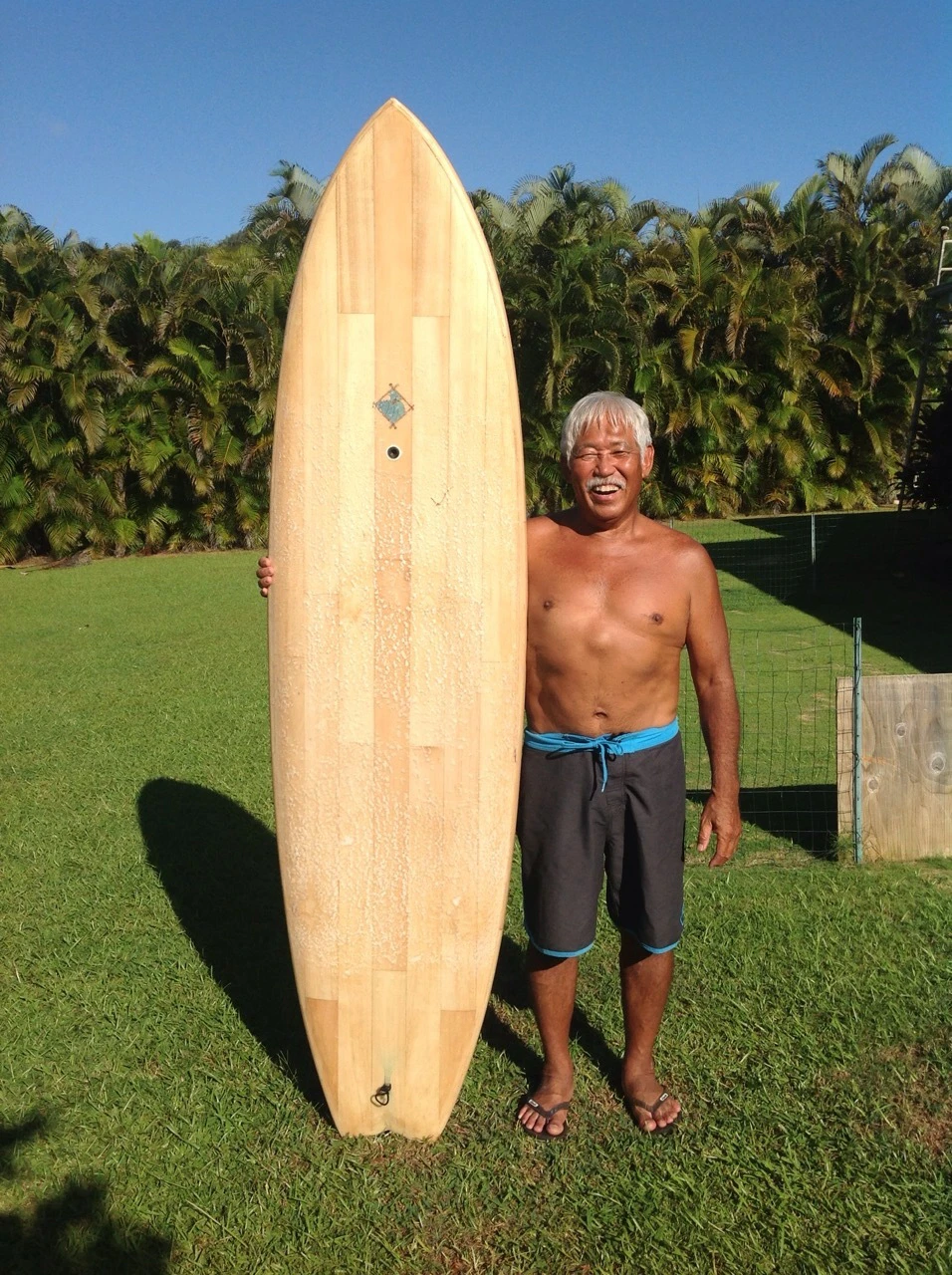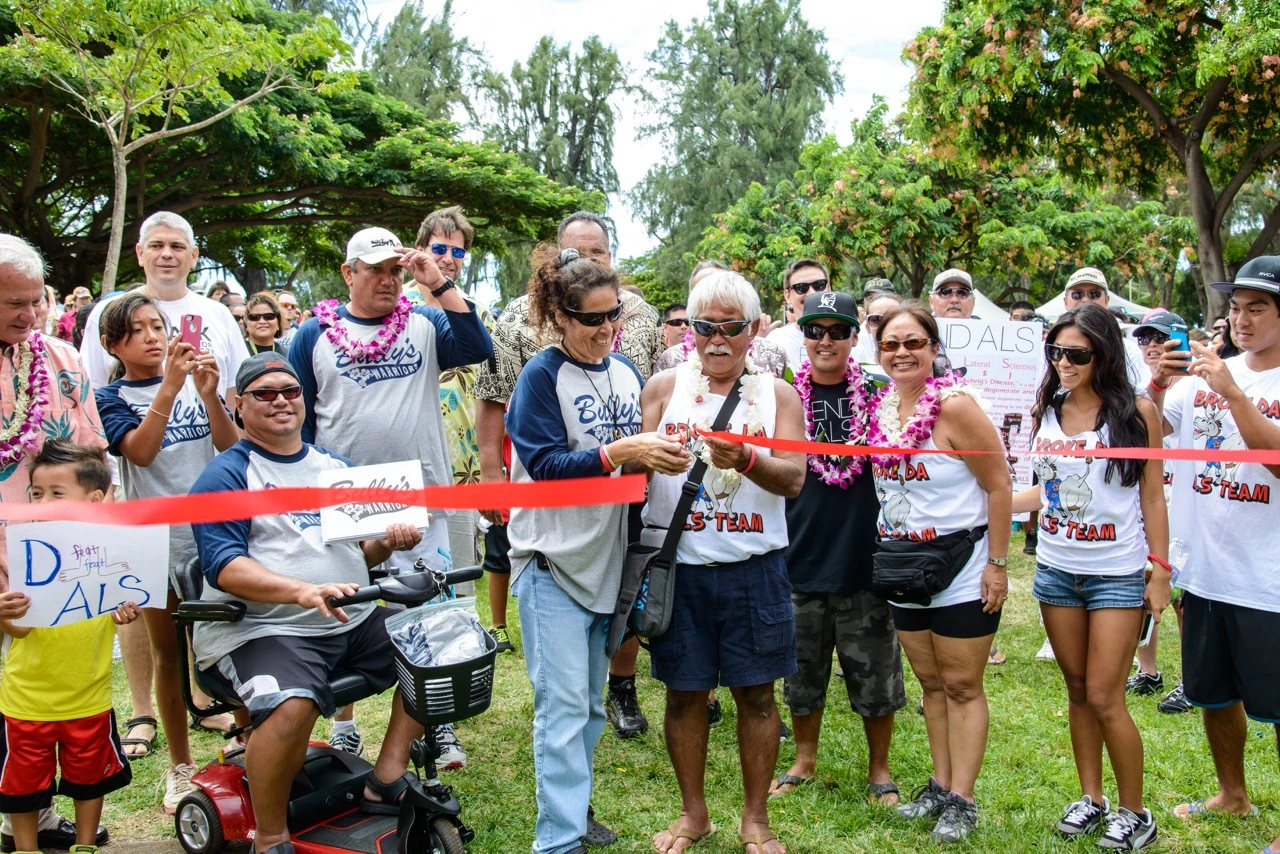Joanne “Cookie” Fujio can’t recall exactly when she and her husband, Gary “Black” Miyashiro, had the conversation that upended their happy life on Kaua‘i — only that it was late fall 2011.
“Black mentioned one day that he was having trouble speaking,” said Fujio, who had retired from the Department of Education the year before. “He said the words were clear in his mind, but he just couldn’t get them out of his mouth.”
After reviewing Black’s MRI in January 2012, his primary care physician referred him to a neurologist at The Queen’s Medical Center. It took four months to get an appointment, and even after additional imaging and a follow-up consultation, the couple received no answers. The neurologist referred Black, a retired supervisor at Verizon (now Hawaiian Telcom), to the University of California, San Francisco’s (UCSF’s) Memory and Aging Center.
Three months passed without any word, and days for Black and Fujio were filled with concern, frustration, anxiety and uncertainty. “By then, it was September, so I called the memory center,” Fujio said. “They said Black was still on their waiting list, and the earliest he could be seen would be spring 2013. Then, in early October, they said a spot had opened the following week. We took it and packed our bags.”
Black’s speech had continued to decline along with his ability to chew and swallow. They stayed in San Francisco for a week — two full days of which were testing — then flew home after agreeing to participate in a research project during a future visit.
Just two weeks later, however, they were asked to return to San Francisco for that study. Black completed another series of tests and was told none of the results indicated he had memory problems. He was referred to UCFS’s ALS & Neurodegenerative Disease Center whose director, Dr. Catherine Lomen-Hoerth, examined him right away.
She shared Black’s devastating diagnosis on Halloween 2012: Amyotrophic Lateral Sclerosis (ALS), commonly known as Lou Gehrig’s disease after the New York Yankees’ star first baseman in the 1920s and 1930s. Diagnosed in 1939, Gehrig was the first celebrity to put ALS in the public eye. Other luminaries afflicted with the disease also helped raise awareness about it, including Oscar winner David Niven; Roberta Flack, who received four Grammys; Pulitzer Prize-winning photographer Eddie Adams; and physicist Stephen Hawking, famed for his groundbreaking theories on black holes and the origin of the universe.
Fujio immersed herself in research about ALS and discovered that it is notoriously difficult to diagnose. No single test can confirm the disease; instead, doctors must first carefully rule out other conditions with similar symptoms such as multiple sclerosis. These symptoms include muscle weakness, slurred speech, difficulty swallowing and trouble walking. A diagnosis of ALS can take from 10 to 16 months — or even longer — depending on patients’ access to medical care.
Eventually, they can’t talk, eat, move or breathe. Although symptoms can be managed and progression can be slowed with drugs, physical therapy and breathing exercises, there is no cure. ALS strikes people of all races and ethnicities, usually between ages 40 and 70. Life expectancy is two to five years after diagnosis.
“About 75 percent of ALS patients start losing mobility first, but that wasn’t the case with Black, so the doctors initially didn’t think he had ALS,” Fujio said. “In fact, he moved pretty well until the last 10 months of his life. Then his health declined rapidly.”
Black passed away peacefully at home on August 7, 2015. He was 68 years old.
This year, a decade later, Fujio spent part of that day listening to some of the hundreds of CDs and songs Black had downloaded on the iPad he used to communicate when he could no longer speak. He enjoyed all types of music, from oldies to jazz, Hawaiian to reggae. They remind her of who he was: kind, dependable, fun-loving, always willing to help others.

“He was happiest when he was in the sun—surfing, golfing, fishing, doing yardwork,” Fujio said. “His friends called him Black because his skin had darkened from the countless hours he spent outside. That may not be a politically correct nickname today, but it fit him. He was rarely indoors.”
It still saddens her to think that Black died before their son and daughter got married and their two grandchildren were born.
“But our family’s ALS story isn’t unique,” Fujio said. “Many others have gone through the same, often even more difficult, challenges. Supporting Hawai‘i’s ALS community has allowed me to honor Black in a meaningful way and find strength in helping others.”
Fujio has served as an advisory trustee for the ALS Network—a 501(c)(3) nonprofit based in Woodland Hills, California—since 2013. In that unpaid role, she views herself as a relationship builder, connecting the organization with people in Hawai‘i who can further its mission to “drive the discovery of prevention strategies, treatments and cures for ALS; provide access to quality care and connection; and promote initiatives to improve health outcomes.”
Among other things, she fundraises, seeks grant opportunities, finds resources for support services, and meets with government officials and community leaders.
“There was very little help for local ALS families when our first benefit walk was held in 2013,” Fujio said. “We had to figure things out on our own. ALS doesn’t just affect patients; it also takes a toll on their caregivers and loved ones. It can leave families emotionally drained and financially burdened. I want to ensure that everyone in Hawai‘i who’s facing ALS receives the care and compassion that they need. It’s a hard, heartbreaking journey, and no one should have to walk it alone.”

Hawai‘i Walk & Roll to Cure ALS
Now in its 12th year, this fundraiser is set for Saturday, October 11, at Kapi‘olani Park. Check-in is at 8 a.m.; the walk will begin at 9 a.m.
There will be routes to accommodate all levels of ability, including those in wheelchairs. Participants should register by October 4. There is no fee, and attendees can look forward to live hula and music, food booths, an ALS resource fair, keiki activities, prizes and giveaways.
For more information, to join the walk and/or to make a tax-deductible donation, visit here.
For the latest news of Hawai‘i, sign up here for our free Daily Edition newsletter!







